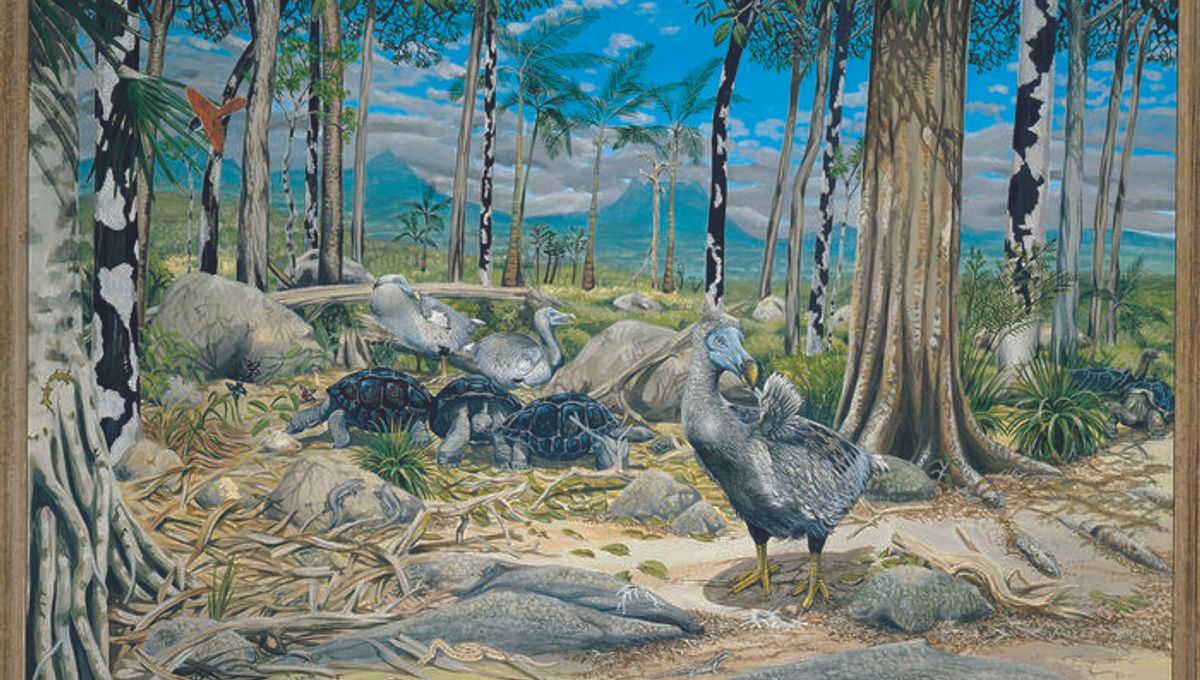
The Dodo (Raphus cucullatus), arguably the most famous extinct animal, is comparatively poorly understood. Endemic to the island of Mauritius, the doomed flightless bird is the subject of myriad myths and misconceptions, not least of all its scientific name and the number of species that make it up. In the most comprehensive review of the taxonomy of the Dodo and its closest relative, the also-extinct Rodrigues Solitaire (Pezophaps solitaria), researchers have finally shed some light on the mysterious bird – which, as it happens, was just one species after all.
Dodo nomenclature is something of a mess, as the researchers discovered when they pored through 400 years of scientific literature on the ill-fated avians. The birds were named after they went extinct, but before proper naming conventions had been established, and thanks to their rapid decline, there was very little evidence of them in natural history collections, and crucially no type specimens (reference point) existed – as a result, some naturalists believed them to be mythological.
All of this made classifying them incredibly difficult, and as such the Dodo has had its fair share of names over the years, from Didus ineptus to Didus cucullatus via Struthio cucullatus – before finally settling on Raphus cucullatus.
“This was a time before the scientific principles and systems we rely on to label and classify a species were in place. Both the Dodo and the Solitaire were gone before we had a chance to understand what we were looking at,” Dr Neil Gostling, supervising author of the paper, said in a statement.
The confusion led to a number of misidentifications in the centuries after the Dodo’s extinction. Species such as the Nazarene Dodo, the White Dodo, and the White Solitaire were suggested, although none of these creatures actually existed, the new study confirms.
“Unfortunately, no one could agree how many species there had been,” added Dr Mark Young, lead author of the paper. “Throughout most of the 19th and 20th centuries, researchers thought there were three different species, although some people thought there had been four or even five different species.”
To clear up the mess, the team picked through all the literature on the Dodo and Solitaire, dating back to 1598, and visited specimens around the UK, including the only surviving Dodo soft tissue in the Oxford Museum. Fun fact: all taxidermy Dodos are fakes – those feathered models you see in museums are all replicas, as no complete specimens exist.
“More has been written about the Dodo than any other bird, yet virtually nothing is known about it in life,” said Dr Julian Hume, coauthor of the paper.
“Based on centuries of nomenclatural confusion, and some 400 years after its extinction, the Dodo and Solitaire, continue to prompt heated debate. We’ve gone from where the first statements were made, seen how these have developed, and identified various rabbit holes to correct the record, as best we can.”
By doing so, they were able to confirm that both birds were members of the columbid (pigeon and dove) family and also form a subclade within that. This clade uniting the Dodo (Raphus) and Solitaire (Pezophaps) has even been given a new name (Raphina), in the interest of avoiding further nomenclatural confusion.
The naming issue may seem trivial, the study authors admit, but it has a profound impact on how the natural world is perceived by the public and policy-makers. Given the current rate of species extinctions, writing the wrongs we made with the Dodo – including its bungled taxonomy – is imperative.
“It’s like solving a 300-year-old puzzle, and the solution might just help us prevent more birds from going the way of the Dodo,” concluded coauthor Dr Markus Heller.
The study is published in the Zoological Journal of the Linnean Society.
Source Link: There Was Only Ever One Species Of Dodo – Study Clears Up 400 Years Of Confusion